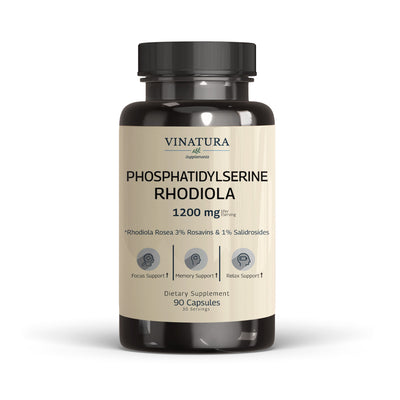
Is It Bad To Dry Scoop Creatine? Explore Its Pros And Cons
Dry scooping creatine has quickly become a viral trend among fitness enthusiasts and athletes seeking rapid and visible results.
This method, which involves consuming creatine powder without mixing it with water, has sparked heated debate within the health and sports nutrition communities. Supporters tout its convenience and time-saving appeal, while critics raise valid concerns about its potential risks.
In this article, we’ll delve into the science behind dry scooping creatine, assess its pros and cons, and help you determine whether this method is genuinely effective—or simply a dangerous and misguided craze.
Before exploring further, please read the disclaimer located at the end of this webpage.
Pros and Cons of Scooping Creatine
To determine whether dry scooping creatine is safe and rational, one must weigh the potential benefits against the associated risks. Here's a breakdown of the key points:
|
Advantages |
Disadvantages |
|
Fast and convenient |
May irritate the throat or cause choking |
|
Eliminates the need for a shaker or water |
Reduces solubility and absorption |
|
Mimics the habit of taking pre-workout powders |
Can cause gastrointestinal discomfort |
|
Saves time |
No scientific evidence supports its superiority over diluted creatine |
|
Popular within the fitness community |
May strain the kidneys if taken without sufficient hydration |
Overall, while dry scooping creatine might appear time-saving and efficient, most of its perceived benefits are anecdotal and not backed by clinical data. Conversely, the potential risks—though avoidable—warrant serious attention.
Is Dry Scooping Creatine Bad?
Fundamentally, dry scooping creatine isn’t inherently dangerous—but it introduces avoidable risks, especially when done without adequate hydration.
Creatine monohydrate, the most widely studied form of creatine, is absorbed more efficiently when dissolved in water. Proper solubility enhances its transport into muscle cells and promotes faster muscle saturation—a benefit highlighted in a 2017 study published in the Journal of the International Society of Sports Nutrition (Kreider et al., 2017).
In contrast, taking creatine without water may not only reduce its absorption but also burden the kidneys if water intake is inadequate (Pine et al., 2005).
Beyond the scientific concerns, practical experiences from users also highlight potential issues. Some Reddit users reported that dry scooping doesn’t offer any added benefits and can even cause throat irritation or nausea—especially when consumed hastily or without follow-up water.*
Why Do Some People Take Scooping Creatine?

The rise of dry scooping is largely driven by social media trends and gym culture. Influencers often portray this method as a symbol of grit or toughness, reinforcing the belief that it offers superior results or faster absorption.
Some users find it convenient—no mixing, no bottle, just quick intake. Others are misled into thinking it delivers faster results, assuming skipping the dilution step speeds up absorption. However, this belief lacks any scientific foundation.
In short, there’s no compelling or justified reason to consider dry scooping as a scientifically effective or recommended method for creatine supplementation.
What are the Cons of Taking Scooping Creatine?
There are several important reasons why dry scooping creatine is not an ideal choice:
- Risk of choking: Without liquid, the dry powder can become lodged in the throat, making swallowing difficult and potentially dangerous.
- Digestive discomfort: Nausea, bloating, and stomach pain are common complaints.
- Poor absorption: Creatine must be dissolved to be absorbed efficiently in the intestines.
- Kidney strain: Insufficient hydration may elevate the burden on renal function, especially when creatine is taken in high doses over extended periods.
- No added performance benefit: There is no credible evidence to suggest dry scooping improves creatine bioavailability or enhances workout outcomes.
In summary, these disadvantages far outweigh any supposed advantages—particularly when there are safer and more effective ways to use creatine.
Different Ways to Take Creatine: What Are Your Options?
Aside from dry scooping, there are several other methods of creatine supplementation that may offer more effective and safer absorption, while still maintaining convenience and utility:
- Mixing Creatine with plain water, food or fruit juice: This is the most common and scientifically supported method of supplementation. It allows for proper dissolution and optimal absorption of creatine through the digestive tract.
For those who prefer fruit juice, community insights can be surprisingly helpful. Many Reddit users have suggested popular options like pineapple juice, strawberry juice, orange–banana blends, lemonade, or mango lemonade. These juices not only have a smooth texture and refreshing flavor but also help mask the taste of creatine, making it far easier and more enjoyable to consume.*
- Adding to protein shakes: This method not only improves efficiency but also seamlessly integrates into your existing workout routine, making it incredibly convenient and easy to adopt.
One Reddit user even shared a creative routine to make it more bearable: he combines creatine and protein in a shaker bottle, shakes it thoroughly for 10–15 minutes while watching TV or playing games to help it dissolve better. When it’s time to drink, he simply pinches his nose—and downs it in one go.*
- Using creatine capsules or tablets: Capsules offer a no-fuss alternative that is pre-dosed, flavorless, and doesn’t require any mixing. This makes them an excellent option for those seeking both simplicity and precision.
- Creatine gummies: These flavored chewable supplements are becoming increasingly popular. They provide a palatable and moderately dosed form of creatine that appeals to those who dislike powders or pills.
You may also read: 13 Best Creatine Supplements for Strength and Performance
However, user feedback tells a more nuanced story. After going through tons of comments about creatine gummies, I noticed that most users agree on one thing: unless you're having serious issues with creatine powder, there's really no strong reason to switch to gummies. They’re significantly more expensive, and the absorption isn’t any better. That said, one thing everyone seems to agree on—the taste is actually pretty great.*
Given these safer and well-studied options, there’s little justification for keeping dry scooping on the table—especially when the potential risks far outweigh any hypothetical benefits. Clearly, better choices are available.
How to Dry Scoop Creatine Properly
- Despite the caveats outlined above, dry scooping creatine is not strictly forbidden. If you still choose to proceed, there are several critical guidelines you must follow to reduce risks and support efficacy:
- Use an accurate dose: Limit each serving to 3–5 grams. Overdosing not only increases the risk of side effects but also offers no additional benefit.
- Follow with a full glass of water: Drinking a full glass of water right after taking the dry powder helps reduce the risk of choking and facilitates faster dissolution and absorption.
- Stay well-hydrated throughout the day: Creatine increases water retention in muscles, and inadequate hydration may place unnecessary stress on the kidneys.
- Avoid combining with pre-workouts: Pre-workouts often contain stimulants and fine powders, compounding the risk of throat irritation, nausea, and adverse cardiovascular effects when dry scooped.
Common Myths About Dry Scooping Creatine — Debunked

“Dry scooping helps creatine absorb faster.”
This is one of the most persistent misconceptions. In reality, creatine must be dissolved in liquid to be absorbed effectively in the small intestine. Dry powder slows this process down and may even reduce its bioavailability.
“It works better than mixing with water or a shake.”
Categorically false. There is no scientific evidence to suggest that dry scooping improves absorption, uptake, or athletic performance. In contrast, traditional methods—such as mixing with water or protein shakes—are tried-and-true, with a strong track record of safety and efficacy.
“It’s fine because people do the same with pre-workout.”
This logic is flawed. Most pre-workouts contain stimulants and highly concentrated ingredients in powder form, which amplify the risks of throat irritation, heart palpitations, and gastric distress when dry scooped. Creatine, while milder, is not exempt from these concerns.
“Washing it down with water is basically the same.”
Partially true—but not ideal. While water may help clear the throat, it doesn’t guarantee that the creatine has been adequately dissolved for optimal absorption in the gut. The process remains suboptimal compared to pre-dissolving it.
“There’s no real risk in dry scooping creatine.”
This is the most dangerous myth of all. Dry scooping creatine may lead to stomach upset, choking, esophageal irritation, or increased kidney strain—especially if done without sufficient hydration. In short, it’s not “risk-free” by any standard!
Testimonial Disclaimer
*The testimonials presented on this website are provided by individuals based on their personal experiences with our products. These testimonials represent individual opinions and experiences, which may not be typical or applicable to all users of our products. Results may vary depending on a variety of factors, including individual health, lifestyle, and adherence to product usage instructions.Conclusion
In summary, while dry scooping creatine may appear trendy and time-saving among gym enthusiasts, science strongly favors traditional methods of dilution. There’s no added benefit—only added risk. For optimal safety and effectiveness, dissolve your creatine in water or incorporate it into a shake as recommended. If you still insist on dry scooping, at the very least, ensure you’re not coughing up creatine powder mid-rep.
References
- [1] Kreider, Richard B., et al. “International Society of Sports Nutrition Position Stand: Safety and Efficacy of Creatine Supplementation in Exercise, Sport, and Medicine.” Journal of the International Society of Sports Nutrition, vol. 14, no. 1, Informa UK Limited, Jan. 2017, https://doi.org/10.1186/s12970-017-0173-z.
- [2] Pline, Kurt A., and Curtis L. Smith. “The Effect of Creatine Intake on Renal Function.” Annals of Pharmacotherapy, vol. 39, no. 6, SAGE Publishing, May 2005, pp. 1093–96, https://doi.org/10.1345/aph.1e628. Accessed 11 May 2025.
Author

Product Disclaimer
The dietary supplement products mentioned on this website are formulated based on scientific research and adhere to FDA guidelines for dietary supplements. However, the content of the articles has not been evaluated by the Food and Drug Administration (FDA) and is not intended to promote or endorse any specific product. Any products sold on this website are not intended to diagnose, treat, cure, or prevent any disease.
Opinions and Endorsements
Any claims, statements, or opinions expressed in the articles are those of the author(s) and do not necessarily reflect the views or opinions of the manufacturers of the dietary supplement products. The products sold on this website are separate from the content of the articles and are not directly endorsed or associated with the information presented here.
Liability Disclaimer
The author(s) of the articles, website, and manufacturers of the dietary supplement products do not assume any liability for any potential consequences arising from the use of the information provided in the articles. It is recommended that individuals consult with a qualified healthcare professional before making any dietary or lifestyle changes, including the use of dietary supplements.
Product Usage
Please refer to the product labels and packaging for specific usage instructions and guidelines for the dietary supplement products sold on this website.
Customer Support
For any concerns or questions regarding the dietary supplement products, please contact our customer support team, who will be more than happy to assist you.





Leave a Comment
Be the first to comment.
What do you think?